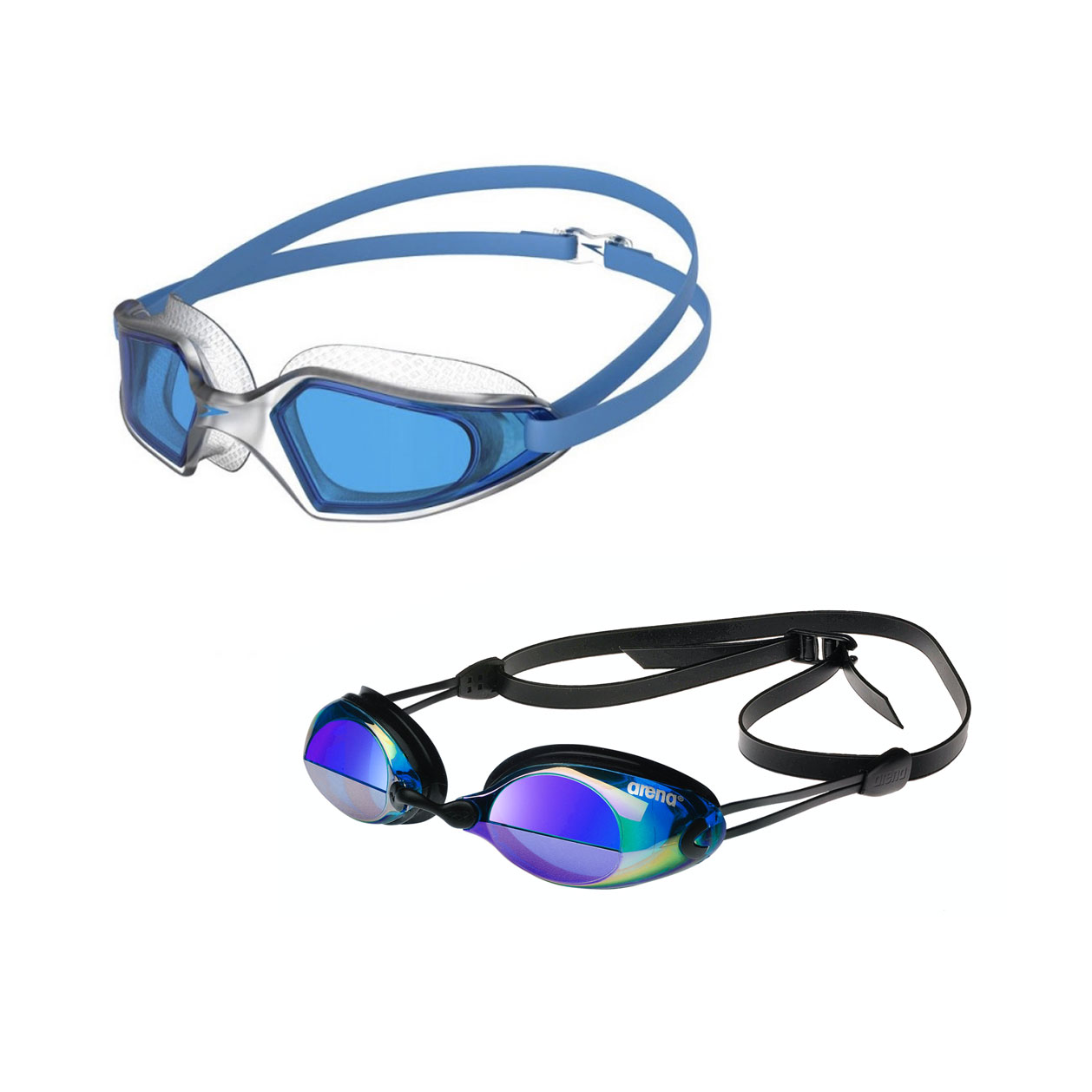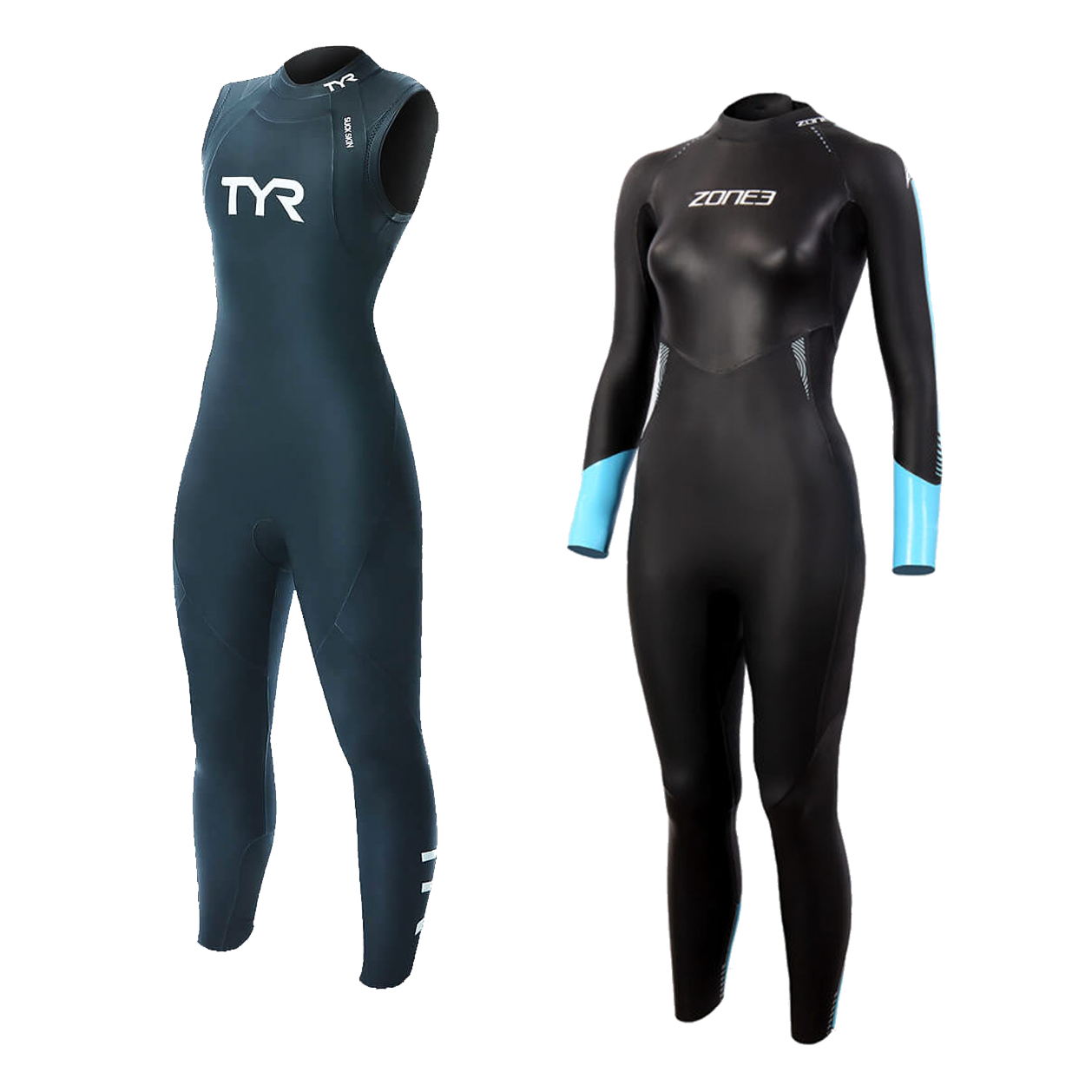We use cookies to make your experience better. To comply with the new e-Privacy directive, we need to ask for your consent to set the cookies. Learn more.

SWIMMING GEAR
The first part of a triathlon, the swimming, can be quite a challenge. Lack of skills or the wrong equipment can make swimming unpleasant. But it is learnable and having the right equipment for you can make a big difference.
Below you’ll find information on how to choose your swimming gear.
WHICH GOGGLES TO CHOOSE?
There are a lot of different goggles – some are for open water, others for pools. Before buying your own pair of goggles think about where you’ll use them the most. This will make the choice easier.
With seal
These goggles have a soft seal and are good for open water swimming. The wider glass gives a good range of view, which helps in an open water setting and the soft seals protect you even if someone’s arm or leg bumps you at the triathlon start.
Without seal
These goggles are mainly for competing. The have a low profile, are close to the head and create little drag in the water. They can be uncomfortable for the average user. The have a narrow range of view, so they are not the best for open water. However, if your goal is to be fast in a pool these will be the right choice.

HOW DO THE GOGGLES FIT YOUR FACE?
When you are choosing your goggles, you should to a test. If you put on the goggles without the strap they should stay in place for a couple of seconds. This will show if the goggles are right for your face shape and will help prevent the trouble of leaking. Goggles have different levels of flexibility – some are more curved and flexible, others straight and stiffer.
For a triathlete the most important thing is range of view. You’ll need to spot the buoys in the water or your opponents. Therefore, we suggest more curved and flexible goggles, so that your experience in the water will be more enjoyable and safe. Straighter goggles are more stiff and slightly more uncomfortable. When training and racing in open water we suggest choosing darker goggles, as this helps with visibility in a sunny weather.

WHICH WETSUIT TO CHOOSE?
When it comes to triathlon, the wetsuit is usually on of the last pieces of equipment athletes buy. However, you should start thinking about it at the start of your journey when you have your first open water sessions and prepare for your first starts. A good wetsuit will keep you warm, improve buoyance, reduce drag, and help you swim faster.
First thing to know about wetsuits is that there are two kinds of them – for diving/surfing and for swimming. The main goal of diving and surfing wetsuits is to keep you warm, but they limit the range of motion in the arms and legs and can feel big and clumsy. Swimming wetsuits are made out of neoprene, which is water repellent and has little darg. It will ensure you a comfortable swim and lets you move your body freely.
The main differences in wetsuits are in the materials and surface treatment. The higher the price the more water repellent and flexible it is. High class wetsuits have a balanced buoyance, meaning for heavier body parts like hips and thighs the neoprene is thicker, but it is thinner in the arms. The goal is to have a steady buoyance across the body and therefore better body position. The buoyance improving panels on wetsuits are different and you can make the choice based on your needs.
ADDITIONAL GEAR
It is good to use a swimming cap both in the pool and open water. For open water the cap should be a bright colour, so it is easier to spot you. When the water is colder, you can use two caps to keep warm. For open water sessions there are special safety buoys, which help to make you visible in the water. Some of them can be used to hold your things (e.g. car keys, phone) during the session. In the pool you can use different equipment to improve your technique like fins, paddles, pull buoys and kickboards.
Find your swimming gear here:
